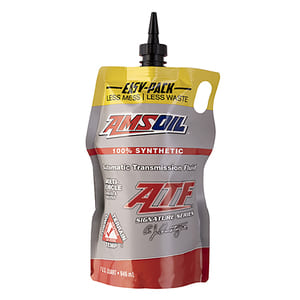Automatic transmissions have advanced significantly, evolving from the simple two-speed Powerglide to today’s complex 8-speed and 10-speed automatic transmissions. Understanding the importance of these advancements requires an in-depth look into one of the core components: the valve body. This post will also compare synthetic automatic transmission fluid vs regular, highlighting the benefits of synthetic options for maintaining optimal transmission performance.
Automatic transmissions have transformed into highly complex systems. The valve body, responsible for controlling the flow of transmission fluid, has become more sophisticated, contributing to smoother and more efficient shifting.

Evolution of Transmissions
From Two-Speed Powerglide to Modern Multispeed Automatics
The journey begins with the humble two-speed Powerglide transmission, which was a staple in many vehicles. Modern vehicles now boast 8-speed and even 10-speed automatic transmissions, offering improved performance, fuel efficiency, and smoother shifts. These advancements were made possible by significant changes within the transmission’s valve body.
Valve Bodies: The Core of Transmission Function
What are Valve Bodies?
Valve bodies are integral to automatic transmissions, consisting of multiple valves that control the flow of transmission fluid. These components are responsible for directing fluid to various chambers, enabling different gear shifts without manual intervention.
Role in Causing Shifts
The valve body facilitates the shifts by channeling fluid through a series of intricate passages and corridors, ensuring the right amount of pressure is applied to execute the shift. Each valve type within the valve body plays a specific role, whether it’s shifting gears, modulating fluid pressure, or initiating reverse.

Components of Valve Bodies
Shift Valves
Shift valves are responsible for directing fluid flow to engage the appropriate gear. These valves move fluid to designated paths to facilitate a shift when needed.
Modulator and Reverse Valves
Modulator valves adjust the fluid pressure to ensure smooth transitions between gears, while reverse valves control the flow necessary for engaging the reverse gear.
Manual Valves
Manual valves are connected directly to the shift lever, allowing the driver to manually select gears. Accurate calibration of these valves is crucial for proper operation.
Fluid Direction in Valve Bodies
Fluid Passages and “Nooks and Crannies”
The valve body is a labyrinth of passages that guide fluid to different parts of the transmission. These nooks and crannies ensure fluid reaches the required areas to perform shifts efficiently.
Solenoids in Transmissions
Shift Solenoids
Shift solenoids, labeled 1, 2, 3, and 4, are electrical components that control fluid flow, enabling precise and timely gear shifts.
Pressure Control Solenoids
Pressure control solenoids adjust fluid pressure based on driving conditions, contributing to smoother and more responsive shifts.
Transmission Shift Process
The process begins at the pump, which pressurizes the transmission fluid. This pressurized fluid is then routed through the valve body’s elaborate passages, causing the transmission to shift gears.

Manual Valve Mechanics
Connection to Shift Lever
The manual valve is directly linked to the shift lever. When the driver moves the lever, the manual valve adjusts, directing fluid to appropriate channels for the selected gear.
Measurement and Tolerances
Precision in valve operation is essential, with tolerance levels often less than the thickness of a sheet of paper. This ensures minimal play and accurate fluid movement.
Importance of Fluid Quality
Limited Space for Fluid Movement
Given the precision required, the transmission fluid must remain fluid and free of contaminants to prevent valves from sticking. High detergency levels in synthetic fluids help maintain cleanliness and performance.
Fluid Maintenance Concerns
Detergency and Avoiding Buildup
Detergency in transmission fluid prevents varnish and deposit buildup, ensuring smooth valve operation. Regular fluid changes are crucial for maintaining optimal performance.

Common Transmission Problems
Varnish Buildup and Shift Issues
Old or degraded fluid can lead to varnish buildup, causing shift problems. Timely fluid maintenance can mitigate these issues.
Transmission Maintenance
Importance of Regular Fluid Changes
Regular transmission fluid changes are essential for preventing buildup and maintaining efficient transmission operation. Check the maintenance schedule for your vehicle’s specific requirements.
Fluid Selection
When choosing transmission fluid, synthetic options often provide superior performance. Synthetic automatic transmission fluid vs regular fluid is an important consideration, as synthetic fluids typically offer better detergency, stability, and temperature resistance.
Signs of Transmission Fluid Issues
Shift Problems and Other Symptoms
Symptoms of transmission fluid issues include erratic shifting, unusual noises, and delayed gear engagement. Regular checks can help identify these problems early.
DIY Transmission Fluid Check
Steps to Check Fluid Level
To check your transmission fluid level:
- Park on a level surface and run the engine until warm.
- Locate the dipstick and check the fluid level.
- Assess the fluid quality, looking for discoloration or burnt smell.
Professional Transmission Service
When to Seek Professional Help
Seek professional service if you notice persistent transmission issues. Technicians can provide comprehensive diagnostics and fluid changes.
Transmission Fluid Technology Advancements
Historical Perspective and Current Innovations
Transmission fluid technology has advanced considerably, with synthetic fluids offering enhanced performance. Innovations in synthetic ATF have led to fluids that withstand higher temperatures and provide better lubrication.
Impact of Transmission Maintenance on Vehicle Performance
Fuel Efficiency and Transmission Longevity
Proper fluid maintenance improves fuel efficiency and extends transmission life. High-quality synthetic fluids reduce wear and stress on transmission components.
Environmental Considerations
Proper Disposal of Old Transmission Fluid
Dispose of old transmission fluid in accordance with local regulations to minimize environmental impact. Many service centers offer recycling options.
Transmission Types and Their Specific Needs
Automatic, Manual, and CVT Transmissions
Different transmission types have unique fluid requirements. Always use the fluid specified by the manufacturer for your transmission type.
Transmission Fluid Additives
Pros and Cons
Additives can enhance fluid performance, but it’s important to follow manufacturer recommendations to avoid potential issues.
Transmission Fluid Testing
At-Home Testing Methods
Use a dipstick to check fluid condition regularly. Look for changes in color or texture that indicate fluid degradation.
Transmission Fluid Myths and Facts
Common Misconceptions
Myth: Regular fluids are just as good as synthetic.
Fact: Synthetic fluids offer better performance and protection.
Transmission Fluid in Extreme Conditions

Cold Weather and Hot Climate Challenges
Synthetic ATF performs better in extreme temperatures, maintaining viscosity and providing reliable lubrication.
Future of Transmission Technology
Predicted Advancements and Fluid Requirements
Future advancements in transmission technology will likely demand even higher-performance fluids, making synthetic options increasingly important.
Cost Analysis of Transmission Maintenance
Short-Term vs Long-Term Costs
Investing in synthetic fluid may have a higher upfront cost but can save money in the long run by extending transmission life and reducing maintenance needs.

Transmission Fluid and Vehicle Warranties
Manufacturer Recommendations
Always follow the manufacturer’s fluid recommendations to ensure warranty compliance and optimal performance.
In conclusion, understanding the role of valve bodies and the importance of using high-quality transmission fluid is vital for any car enthusiast. When comparing synthetic automatic transmission fluid vs regular, synthetic options provide better detergency, stability, and temperature performance, making them a superior choice for maintaining transmission health.

